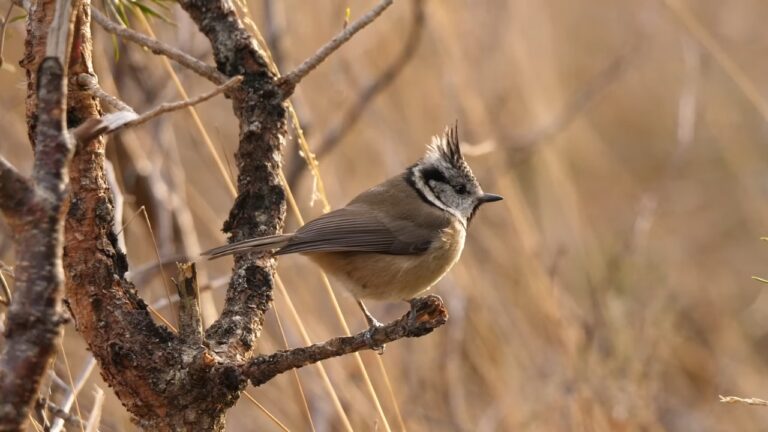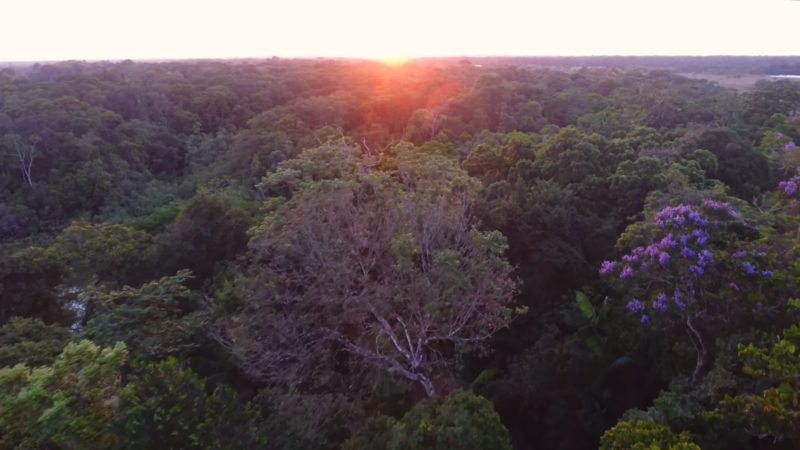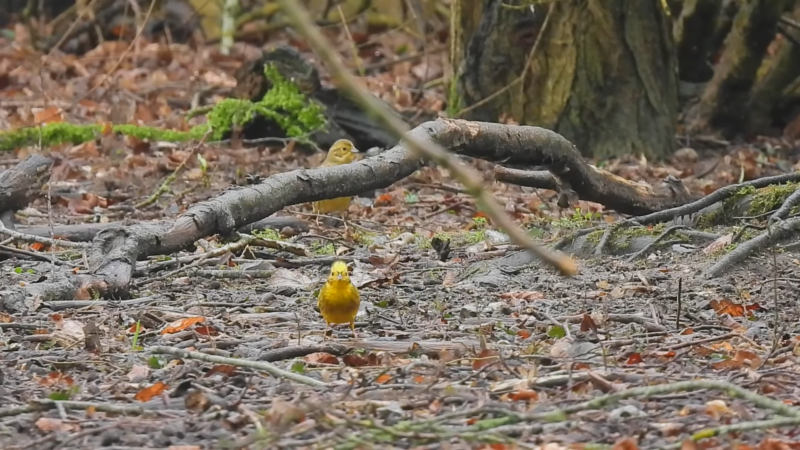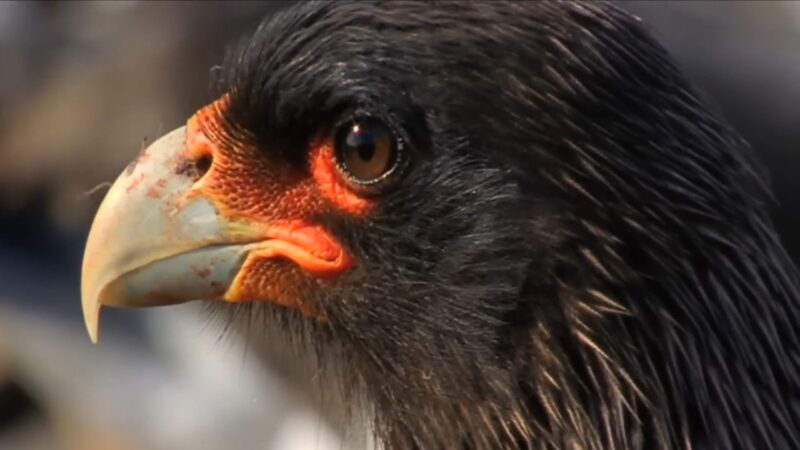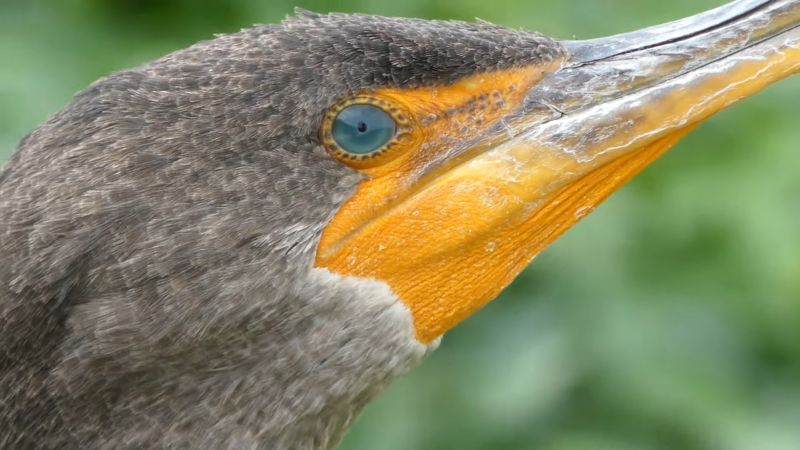Birdwatching can be super rewarding, especially if you’re into spotting crested woodland birds.
The best places to find these unique birds are open areas like pastures, fields, and scrubs.
Dense forests and wetlands are also great spots to explore. These environments are perfect for crested birds.
For example, you can find Hooded Mergansers all over North America, from Alaska to Mexico. The Double-crested Cormorant loves areas with lots of water.
If you’re in the southern U.S., definitely keep an eye out for the endangered Crested Caracara in the savannas.
Knowing the right places to look is key to a successful birdwatching adventure!
Happy spotting!
Table of Contents
Toggle11 Prime Habitats for Crested Woodland Birds
1. Tropical Rainforests
Tropical rainforests are perfect for crested woodland birds because of the dense foliage and plentiful food.
These forests are incredibly biodiverse, offering lots of nesting sites and protection.
The high humidity and constant rainfall support rich plant growth, making it an ideal environment for foraging and nesting. Birds like the Hooded Merganser thrive here, relying on the forest’s insects, fruits, and seeds for their diet.
Migratory species often use these forests for breeding, while some resident species are specifically adapted to this environment. Conservation of tropical rainforests is crucial for maintaining this avian diversity
2. Temperate Broadleaf Forests
These forests offer a variety of microhabitats and a ton of food resources throughout the year. Think insects in the warmer months and seeds and nuts when it gets colder.
Birds like the Great Crested Flycatcher love these environments. The mix of tree species gives them plenty of nesting options, whether it’s high up in the canopy or lower down in the shrubs.
The changing seasons in these forests create a dynamic ecosystem that supports different bird species all year round. Keeping these forests healthy is super important for the survival of crested woodland birds.
3. Mountain Woodlands
Mountain woodlands are fantastic habitats for crested woodland birds. Thanks to their varied elevations and climate conditions, these areas are a mix of coniferous and deciduous trees, offering diverse nesting and foraging opportunities.
The rugged terrain and different elevation levels create unique microclimates.
These support a range of bird species, especially those adapted to cooler temperatures. Birds like crested species often find perfect, secluded nesting spots in these woodlands, away from common predators and human activity.
4. Riparian Corridors
Riparian corridors, those areas right next to rivers and streams, are goldmines for crested woodland birds.
These lush, diverse ecosystems provide everything birds need: water, food, and shelter. It’s no wonder they’re such hotspots for breeding and foraging.
With all the rich vegetation and swarms of insects around these water bodies, crested birds find plenty to eat.
Trees and shrubs along these zones offer perfect nesting sites, and being close to water means a steady food supply is always on hand.
5. Mangrove Swamps
Mangrove swamps, found in coastal areas, are unique habitats that crested woodland birds love. The intricate root systems of mangrove trees provide excellent protection and nesting sites, especially for birds adapted to wetlands.
These swamps are rich in food like insects, small fish, and crustaceans, making them ideal for foraging. The salty conditions and regular tides create a dynamic ecosystem that supports both resident and migratory birds.
Conserving mangrove swamps is crucial. They protect against coastal erosion and provide essential habitats for many bird species.
6. Wetlands
Wetlands are essential habitats for the Double-crested Cormorant. These areas provide abundant water sources and are rich in fish, amphibians, and insects, which are crucial for the cormorant’s diet. During the breeding season, Double-crested Cormorants build their nests in flooded timber or high in trees, taking advantage of the wetland’s resources.
These birds are adept at diving to catch fish and often spread their wings to dry because their feathers lack waterproofing oils. This behavior helps them hunt more efficiently underwater.
Wetlands also play a critical role in maintaining biodiversity and ecological balance. They support a wide variety of species and provide numerous ecosystem services, such as water filtration, flood control, and carbon sequestration
7. Savannas
In the southern United States, savannas are crucial habitats for the endangered Crested Caracara.
These open landscapes with scattered trees and extensive grasslands provide ideal hunting grounds. The Crested Caracara is often seen perched on lone trees or walking on the ground in search of prey.
These birds have a varied diet that includes small mammals, reptiles, and carrion, making the diverse ecosystem of the savannas perfect for their needs.
However, habitat loss due to agriculture, urban development, and other human activities poses a significant threat to the Crested Caracara.
Conservation efforts in these areas are critical. Strategies include protecting existing savanna habitats, restoring degraded areas, and implementing sustainable land-use practices that consider the needs of wildlife.
8. Coniferous Forests
Coniferous forests, dominated by pine and spruce trees, are ideal for birds like the crested tit. These forests offer dense cover and old trees with cavities necessary for nesting.
The availability of insects and seeds supports the diet of these birds throughout the year. Coniferous forests provide a stable environment where crested birds can find both food and shelter.
These habitats are critical for the survival of many crested bird species. Conservation of coniferous forests involves protecting large tracts of forest land, managing them sustainably, and preventing deforestation.
9. Urban Woodlands
Urban woodlands are surprisingly important for birds like the Blue Jay. These areas, which include parks and green spaces within cities, provide food and nesting sites that are crucial for these birds. Blue Jays adapt well to urban environments, where they can find a variety of foods such as nuts, seeds, and insects.
They often nest in the trees found in these green spaces, making use of both natural and human-made structures.
Urban woodlands support diverse bird populations by blending natural and human-modified environments.
10. Agricultural Areas
Agricultural areas with patches of woodlands can be excellent habitats for birds like the Hooded Merganser.
These birds use the fragmented forests and water bodies within farmlands for nesting and feeding.
Sustainable farming practices, such as maintaining hedgerows, woodlots, and ponds, help support these habitats. These practices provide essential resources like nesting sites, food, and protection from predators.
Sustainable farming also involves reducing pesticide use, managing water resources wisely, and preserving natural habitats within agricultural landscapes.
11. Coastal Forests
Coastal forests, characterized by salt-tolerant trees and proximity to water, are perfect for birds like the Double-crested Cormorant. These forests provide abundant food resources from both land and sea, making them ideal for foraging and nesting.
Coastal forests support a diverse bird population by offering a unique habitat where terrestrial and marine ecosystems intersect.
The interplay between coastal and forest environments creates rich habitats that support a variety of bird species. Conservation of coastal forests involves protecting these areas from development, pollution, and other threats.
Best Practices for Birdwatching
Spend time quietly observing from a distance. Avoid making sudden movements and talking loudly, as this might scare away the birds.
Early mornings are usually the best time for birdwatching because birds are more active then. Learning the bird calls can also significantly enhance your chances of spotting them.
Being aware of your surroundings is important. Look for areas with abundant food sources, such as insects, seeds, or berries, as these spots tend to attract birds.
Ladybugs, for example, are a good indicator of a healthy insect population that birds might feed on. Noting down sightings and marking locations on a map can help you track patterns and return to the best spots.
Equipment and Gear
Binoculars with a magnification of 8x to 10x are ideal for detailed views. A field guide helps you identify different species quickly. A notebook for recording observations is also helpful.
Dressing appropriately is crucial. Wearing muted colors like brown and green helps you blend into the environment. Using a portable bird blind can also give you the advantage of getting closer to birds without disturbing them. For those interested in photography, a camera with a telephoto lens is essential to capture detailed shots of these crested creatures.
Behavioral Patterns
Many of these birds, such as the Blue Jay, exhibit territorial behavior and are often found in the same area. Knowing their nesting patterns helps; for instance, some crested birds nest in tree cavities or dense foliage.
Observing feeding routines reveals a lot. Birds like the Hooded Merganser have specific feeding times and prefer certain types of food like fish or aquatic insects.
Time of Day and Seasonality
Early morning and late afternoon are prime times, as birds are most active during these periods. The weather also affects activity; birds are often more visible on clear days.
Seasonality impacts bird presence and behavior. For instance, migratory birds might only be visible during specific seasons. During the breeding season, you may find birds in areas they otherwise do not frequent. Observing and recording these patterns over time enhances your ability to spot and enjoy these magnificent birds.


